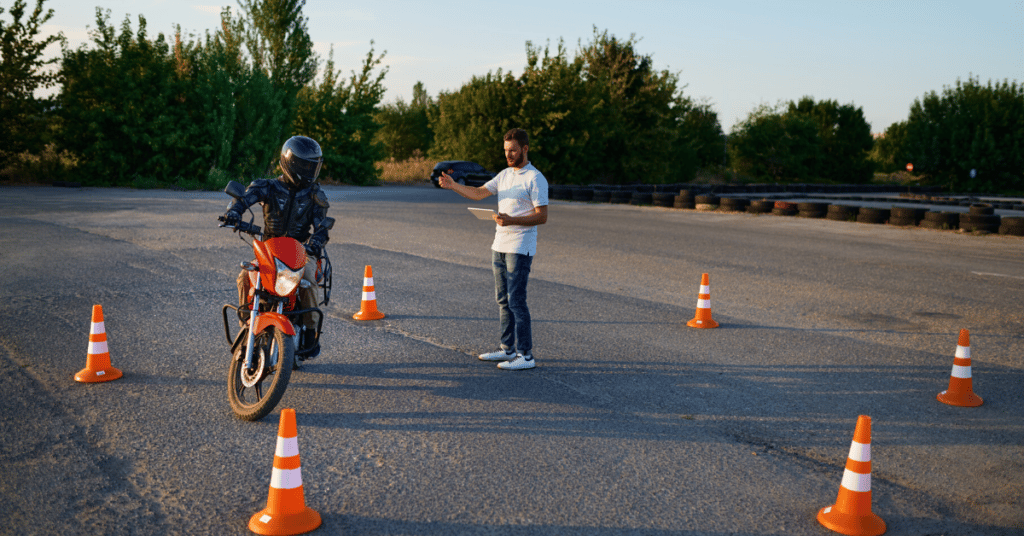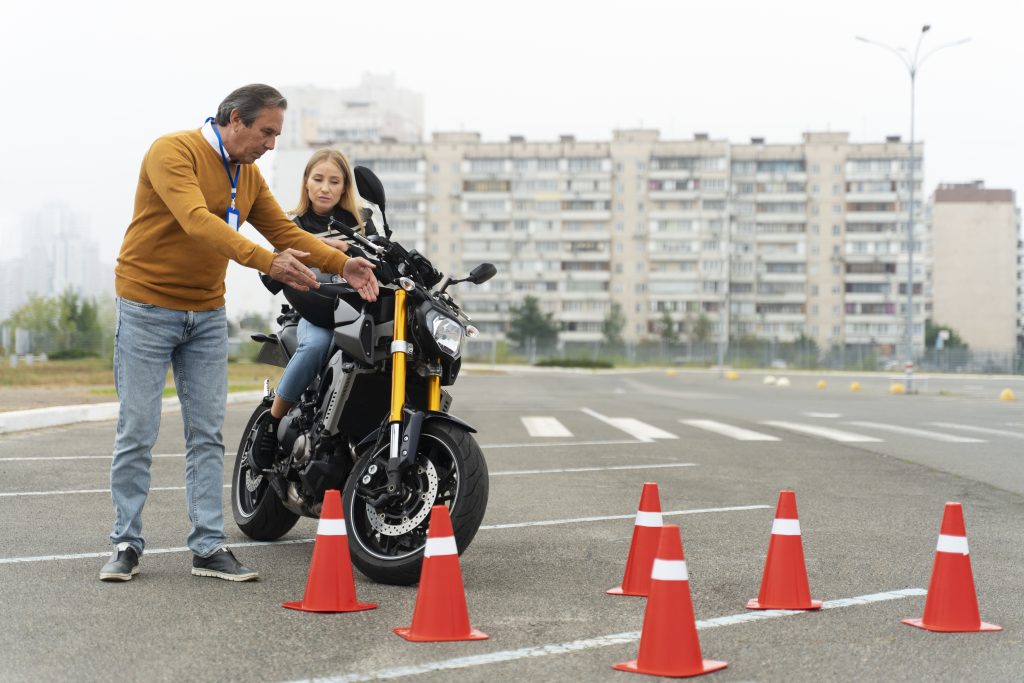

For many, the allure of the open road and the thrill of riding a motorcycle are irresistible. However, before embarking on any two-wheeled adventures, it’s crucial to obtain the necessary skills and certification through a motorcycle driving test. This comprehensive guide will provide you with everything you need to know about the motorcycle driving test, from understanding its importance to preparing for each stage and conquering the road test with confidence.
I. The Significance of the Motorcycle Driving Test: Ensuring Safety and Competence
A. Safeguarding the Road: The motorcycle driving test serves as a crucial gatekeeper, assessing a rider’s ability to safely and competently operate a motorcycle. It evaluates their knowledge of traffic rules, riding techniques, and hazard awareness, ensuring they possess the necessary skills to navigate the road with confidence.
B. Legal Requirements: In most jurisdictions, obtaining a motorcycle license is mandatory to legally operate a motorcycle on public roads. The motorcycle driving test is a prerequisite for obtaining this license, ensuring that only qualified individuals are permitted to ride.
C. Promoting Responsible Riding: The test aims to instill responsible riding habits and promote safe practices among motorcycle riders. By thoroughly evaluating their skills and knowledge, the test helps reduce the risk of accidents and fatalities, fostering a safer riding community.
II. Preparing for the Motorcycle Driving Test: A Comprehensive Guide
A. Enroll in a Motorcycle Riding Course: A motorcycle riding course is an invaluable investment in your safety and success. These courses provide hands-on training and guidance from experienced instructors, allowing you to develop the necessary skills and techniques in a controlled environment.
B. Familiarize Yourself with the Motorcycle: Get comfortable with the motorcycle you’ll be using for the test. Practice basic maneuvers like starting, stopping, shifting gears, and turning in a controlled environment to gain confidence and familiarity with the vehicle’s handling characteristics.
C. Study the Motorcycle Handbook: Thoroughly review the motorcycle handbook provided by your local motor vehicle department. This handbook contains essential information about traffic rules, motorcycle regulations, and safe riding practices, ensuring you have a comprehensive understanding of the expectations for the test.
III. Demystifying the Motorcycle Driving Test Format
A. Written Knowledge Test: The first step is usually a written knowledge test that assesses your understanding of traffic laws, motorcycle regulations, and safe riding practices. This test ensures that you possess the theoretical knowledge required to make informed decisions while riding.
B. Skills Test: Upon passing the written test, you’ll proceed to the skills test, which evaluates your ability to perform various maneuvers on a motorcycle. This test assesses your practical skills and ability to handle the motorcycle in a controlled setting.
C. Road Test: The final phase is the road test, where you’ll demonstrate your riding skills in real-world traffic conditions under the supervision of a licensed examiner. This test evaluates your ability to apply your knowledge and skills in a practical setting.
IV. Conquering the Skills Test: Essential Maneuvers and Tips
A. Slow Speed Control: Practice slow-speed maneuvering, including figure-eight turns, U-turns, and emergency stops. Ensure smooth and controlled handling, maintaining balance and proper body positioning throughout the maneuvers.
B. Clutch and Throttle Coordination: Master clutch and throttle coordination to achieve smooth gear changes and maintain a steady balance while accelerating and decelerating. Practice in a safe environment to develop a seamless and controlled approach to gear changes.
C. Turning and Cornering: Practice turning and cornering techniques, including proper body positioning, weight distribution, and lean angles for safe and efficient handling. Learn to anticipate turns, adjust your speed accordingly, and maintain control throughout the cornering process.
V. Navigating the Road Test: Strategies for Success
A. Pre-Test Preparation: Inspect your motorcycle thoroughly, ensuring it’s in good working condition and meets all safety standards. A well-maintained motorcycle will perform reliably and allow you to focus on your riding skills.
B. Arrive Early and Stay Calm: Arrive early for the test to allow sufficient time to relax and focus. Maintain a calm and composed demeanor throughout the test, as nerves can affect your performance.
C. Active Observation and Anticipation: Actively scan the road ahead, anticipating potential hazards and reacting promptly to traffic situations. A proactive approach to hazard recognition and avoidance is crucial for safe riding.
D. Follow the Examiner’s Instructions: Pay close attention to the examiner’s instructions and follow them precisely to demonstrate your understanding and compliance. Clear communication and adherence to instructions are essential for a successful road test.
VI. Beyond the Test: Continuous Learning and Safe Riding Practices
A. Lifelong Learning: Motorcycle riding is an ongoing learning process. Continue to practice your skills, take refresher courses, and stay updated on traffic regulations. Continuous learning ensures that you remain a competent and aware rider throughout your motorcycle journey.
B. Defensive Riding Techniques: Adopt defensive riding techniques to anticipate and avoid hazards. Maintain a safe following distance, use turn signals properly, and avoid distractions like your phone. Defensive riding allows you to react proactively to potential dangers on the road.
C. Gear Up for Safety: Always wear appropriate protective gear, including a helmet, jacket, gloves, pants, and boots. This gear minimizes the risk of injury in case of an accident. Prioritizing safety is paramount when riding a motorcycle.
VII. Conclusion: The Road to Motorcycle Mastery
A. The Rewards of Safe Riding: Mastering the motorcycle driving test and adopting safe riding practices open up a world of exhilarating experiences. You’ll be able to explore the open road with confidence, enjoying the freedom and thrill that only a motorcycle can offer.
B. A Commitment to Safety and Enjoyment: By prioritizing safety and continuous learning, motorcycle riders can enjoy the thrill of riding while contributing to a safer and more responsible riding community. A commitment to safety ensures a more enjoyable riding experience for everyone on the road.
C. Embracing the Journey: The motorcycle driving test is not just about passing an exam; it’s about embarking on a journey of self-discovery, skill development, and a lifelong commitment to safe and responsible riding. Embrace the learning process, enjoy the ride, and explore the world on two wheels with confidence and responsibility.
This expanded version of the blog post provides a detailed guide to the motorcycle driving test, offering practical tips and strategies for success. By including information on continuous learning, safe riding practices, and the overall journey of motorcycle riding, the post goes beyond simply passing the test and encourages a lifelong commitment to responsible ridership.
Leave a Reply